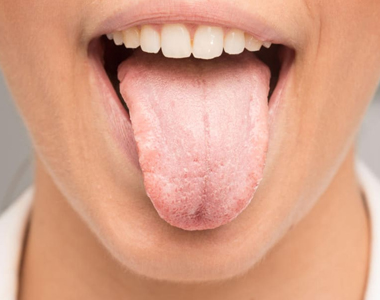
Dry Mouth – Facts and Tips
Category : Gentalcare
Many people experience dry mouth once in a while. This is most likely caused by dehydration, drinking one too many beers, or simply sleeping with an open mouth.
Unfortunately for others, a dry mouth is a chronic problem that can have a stressful impact on their day-to-day life. In addition to these physical side effects, it can also leave people feeling a lack of confidence in social situations, to a point where eating and speaking in public becomes disappointing.
Current research estimates that around one in four adults suffer from a dry mouth condition and this number rises to 40% in people with age over-55s which makes “dry mouth” one of the most common oral health problems.
Here are some facts that might help you understand the dry mouth condition and some advices for managing it.
Top ten facts about dry mouth:
- Dry mouth, also known as ‘xerostomia’ is a condition that affects the flow of saliva, which causes your mouth to feel dry.
- Saliva is the most important component in the mouth. Your mouth needs saliva to be able to work properly. It keeps your mouth moist, helps to break down a part of your food and helps you to swallow. It also acts as a cleanser, neutralizing plaque acids. Saliva keeps your teeth clean, constantly works around in your mouth and fights teeth decay.
- The taste of the food is compromised when there is less saliva in the mouth and makes it harder to eat dry foods. Sometimes it can affect your speech and it makes people more likely to have a bad breath.
- Dry mouth is usually worse at night than in the day since the mouth produces less saliva in the night than in the daytime. This causes dehydration and broken sleep.
- Dry mouth can cause the mouth to become sore and there is a higher risk of tooth decay and gum disease.
- It can be caused as a result of old age, or, quite often it is a side effect of medication – especially heart, blood pressure, gastritis and depression tablets. Your doctor, pharmacist or dentist should be able to tell you whether your medication can cause problems.
- In some cases, dry mouth can be a direct result of a medical condition for example diabetes, lupus, Jorgen’s syndrome and blocked salivary glands.
- Women are more likely to suffer from chronic dry mouth than men which is 27% compared to men 21%.
- Studies have shown that those that suffer from chronic dry mouth also have a higher risk of mental health illnesses and social anxiety.
- Currently, there is no way of actually preventing the problem, although there are products to ease the symptoms.
Top five tips:
- Make sure you regularly visit your dentist. Dry mouth causes a higher risk of tooth decay and gum disease. These can get worse quicker than usual. So it is important to visit your dentist regularly. They will tell you how often you should visit.
- It is important to use a fluoride toothpaste containing at least 1350 to 1500ppm (parts per million) of fluoride. Be aware that some products contain Sodium Lauryl Sulphate (SLS), and some people with dry mouth find this can irritate the mouth which can worsen the condition.
- There are several products designed to help your mouth stay moist and comfortable. These are usually gels or sprays. Some have extra ingredients that may help prevent tooth and gum problems. There are also special products to help with your day-to-day oral hygiene (for example toothpaste and mouth rinses).
- Chewing sugar-free gum can help ease dry mouth as it encourages your mouth to make saliva. Your dentist might recommend products such as rinses, gels, pastes, and lozenges which also keeps your mouth moist.
- Some people find that sipping water or sucking sugar-free sweets helps for a short period. It is very important to use sugar-free products; as dry mouth can make you more likely to have tooth decay.
Loat, Stephen. “Facts and Tips: Dry mouth.” Oral Heath Foundation, 13 Sep 2019
https://www.dentalhealth.org/blog/facts-and-tips-dry-mouth

 Review Us
Review Us  Review Us
Review Us 